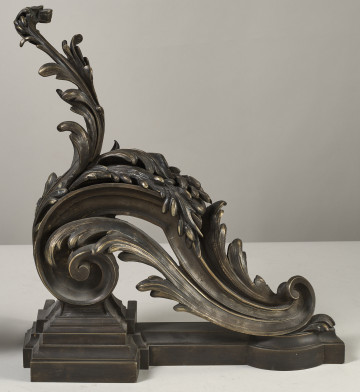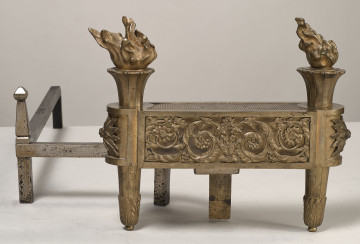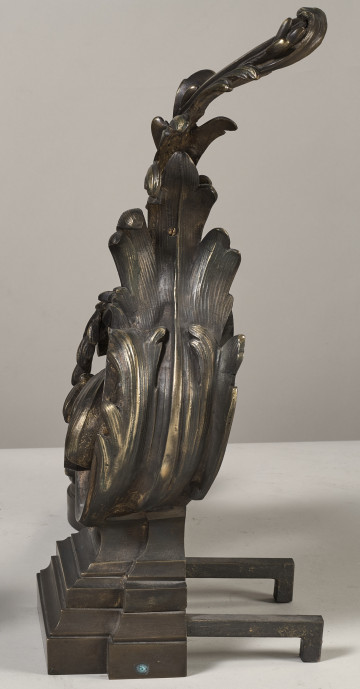
Fireplace wolf
19th / 20th century
Castle Museum in Łańcut
Part of the collection: Metals
Andiron/ fire dog (one of a pair) – S.1974MŁ The history of the andiron begins in the middle ages. They were originally long, wrought iron rods with a hook, to hang a cauldron above the fire. In the 14th century this rod was expanded to include a stem running into the fireplace to hold the pieces of wood, and in the 16th century the practical function (holding of logs) was amended by a decorative function. The name, in Polish – wolf – stems from English (fire dog) and French. The most commonly used material for such holders was wrought iron, even though silver and later bronze, frequently gilded, emerged at the end of the 17th century. The andiron form changed along with fashions and styles, from very simple to very decorative ones. The Potoccy collection andiron, from the 19th century, is made of iron and bronze. It is made up of a hearth and a decorative part. The rectangular hearth, on four legs, decorated at the front with two rising rods ending in balls. The decorative part takes the form of a flaming amphora, with two ears in the form of goat heads. The body is fluted, the base is narrow and decorated with a pearl ornament. The amphora rests on a four-legged square base. The base walls bear decorative floral rosettas. Presently these andirons adorn the Zodiac Room.
Author / creator
Dimensions
height: 11 cm, width: 16 cm
Object type
Metals
Technique
forging
Material
iron
Creation time / dating
Creation / finding place
Owner
Castle Museum in Łańcut
Identification number
Location / status

19th / 20th century
Castle Museum in Łańcut

19th (?) century
Castle Museum in Łańcut

19th / 20th century
Castle Museum in Łańcut
DISCOVER this TOPIC
National Museum in Lublin
DISCOVER this PATH
Educational path